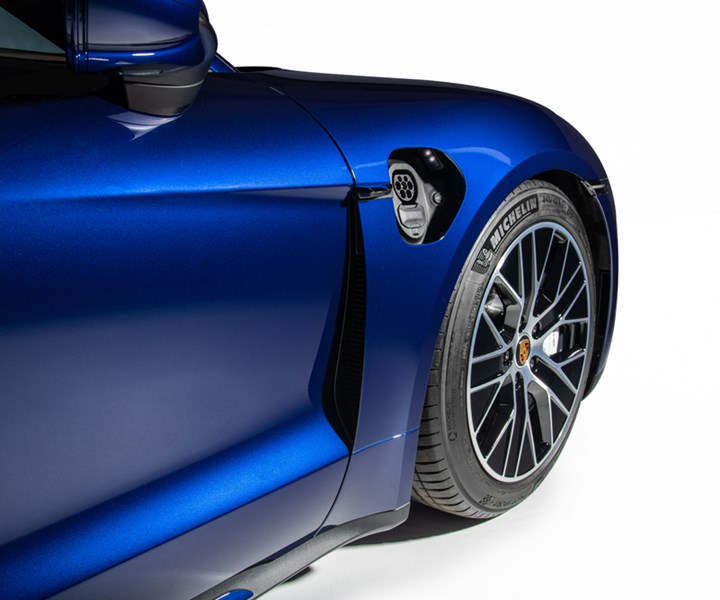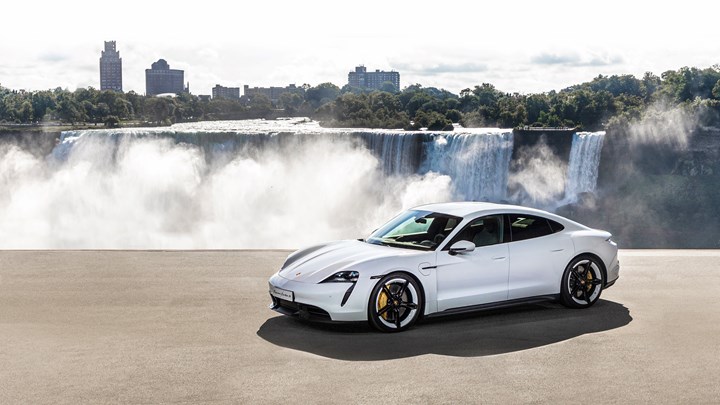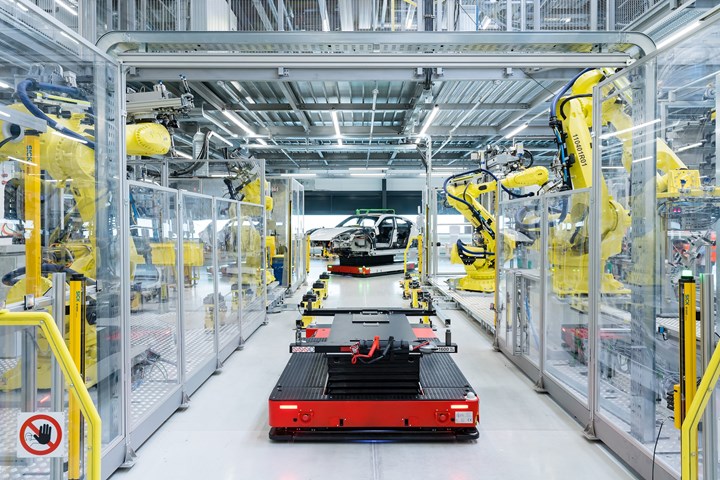The Expensive Electric Future—Taycan & Beyond
There is the engineering. And then there are the economics. . . .
#economics #hybrid

(Images: Porsche)
Porsche intends to invest more than $6.6-billion in electric mobility by 2022. Sure, part of this will be spent on things like hybrids. But there is a huge focus at the legendary purveyor of performance vehicles on full on electric vehicles, like the Taycan that it introduced last week.
Taycan? According to Porsche, “Composed of two terms of Turkic origin, this word can be roughly translated as ‘soul of a spirited young horse.’” Let’s not forget the horse of undeterminable age in the brand’s badge.

What About the Propulsion? There are two versions. The Taycan Turbo S and Taycan Turbo. Neither have turbos. Rather, each has two electric machines, one on the front axle and one on the rear. Porsche developed a two-speed transmission that is housed along with the rear electric motor. First gear is for acceleration. Second is for traveling along at high speed. The Turbo S can generate up to 750 hp (560 kW); the Turbo up to 670 hp (500 kW). Both of these AWD cars (this is what happens when you have motors on each axle) have a top speed of 161 mph.
About the Energy. As of right now, there is no EPA range estimate for the Taycan. But a big issue is with the recharging time. According to Porsche, thanks, in part, to the fact that it operates with a system volts rather than a more common 400, it, “under ideal conditions,” can be recharged from 5% to 80% in 22.5 minutes. The 800-volt battery has a capacity of 93.4 kWh. The regenerative braking system—and Porsche estimates it will be the thing that does 90% of all braking, with the hydraulic brakes being used for 10%--provides up to 265 kW, for efficiency.
Air, too. While one might imagine that an electric car is all-electric, in addition to hydraulic brakes, it has an adaptive air suspension system.

Transporting Taycans in-becoming in the factory.
Heart and Soul. Zuffenhausen is where the Taycan is being built in a CO2 neutral facility that was built for the Taycan. There is a body shop, paint shop, plant for the production of electric motors and components, and a final assembly hall. Stamping is shared with the eighth-generation 911. Explaining the decision to build the car in the town long associated with Porsche essentially in an area such that they had to build a plant within a plant, Albrecht Reimold, Member of the Executive Board for Production and Logistics at Porsche AG, said, “It was a deliberate decision to build the Taycan in Zuffenhausen--the home of the brand’s heart and soul.”
However. . .Mike Tracy is the principal of The Agile Group, a consultancy that he established 26 years ago. Tracy has expertise in manufacturing and engineering. He has worked with Tesla. He has been engaged by Rivian. So he knows about building electric vehicles. (He’s also done an enormous amount of work with ICE-based vehicle production.)
The Taycan Turbo starts at $150,900. The S version starts at $185,000.
Porsche, Tracy speculates, will probably make money.
But other OEMs may have a really, really hard time doing that with their EVs.
And he explains it on this edition of “Autoline After Hours,” with Autoline’s John McElroy, Joe White of Reuters and me.
In Addition. Beyond just EVs we discuss the possibility of a UAW strike against GM, the sell down and ending of production of the Fiat 500 and 500e for North America, and a whole lot more.
Which you can see right here.
RELATED CONTENT
-
on the Genesis GV60 interior, EV sales in H1, Bentley Bentayga's wood work, Faurecia's advanced manufacturing & more
The strange glowing orb in the Genesis GV60. . .global EV sales in the first half. . .creating wood for the Bentayga interior. . .the importance of material handling at Faurecia. . .lux ATPs. . .fast Porsche. . .fast Lambo. . .the Avalon Hybrid. . .Silverado steel. . .
-
Ford’s $42 Billion Cash Cow
F-Series pickups generate about 30% of the carmaker’s revenue. The tally is about twice as much as what McDonald’s pulls in.
-
On Lincoln-Shinola, Euro EV Sales, Engineered Carbon, and more
On a Lincoln-Shinola concept, Euro EV sales, engineered carbon for fuel cells, a thermal sensor for ADAS, battery analytics, and measuring vehicle performance in use with big data


.jpg;width=70;height=70;mode=crop)